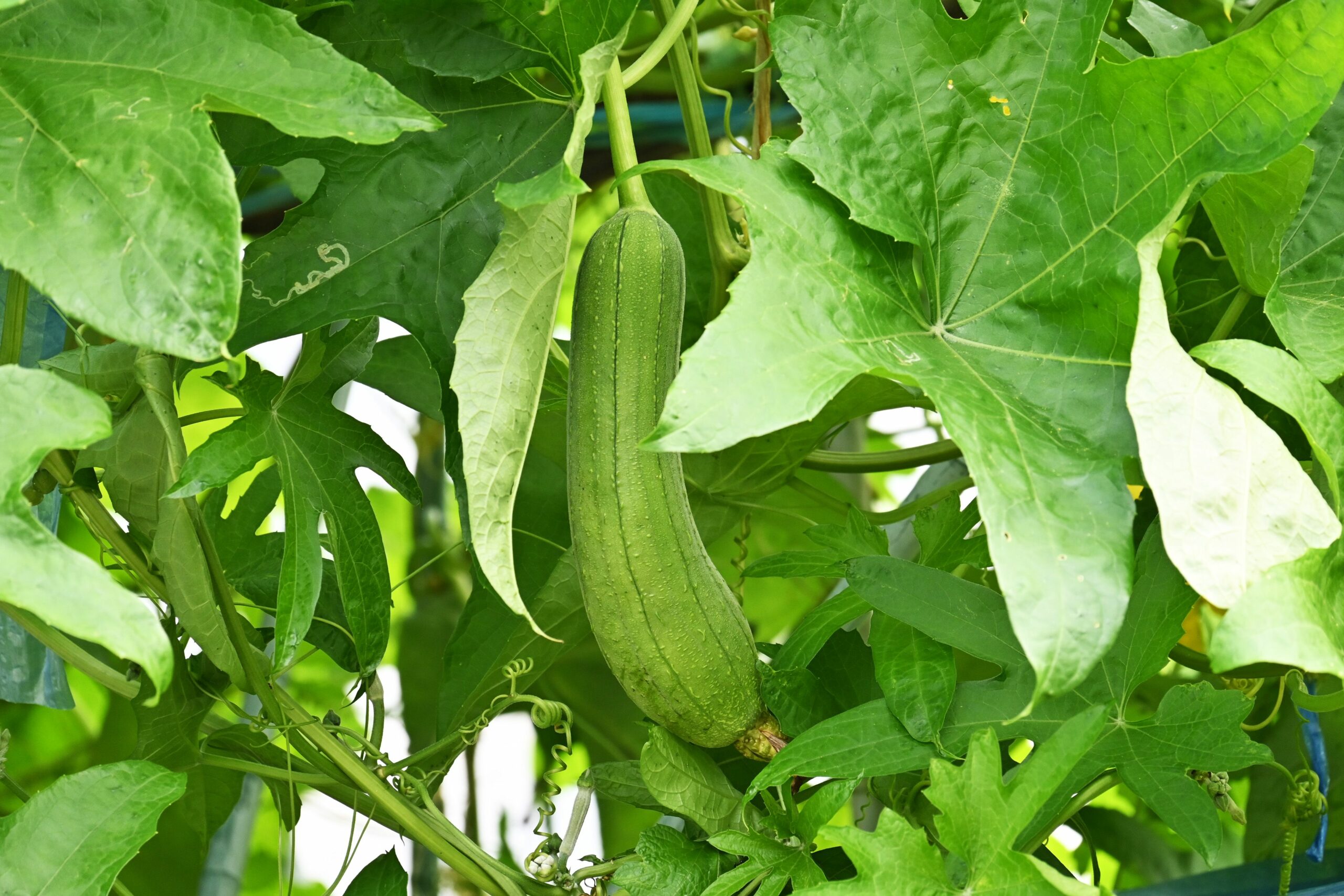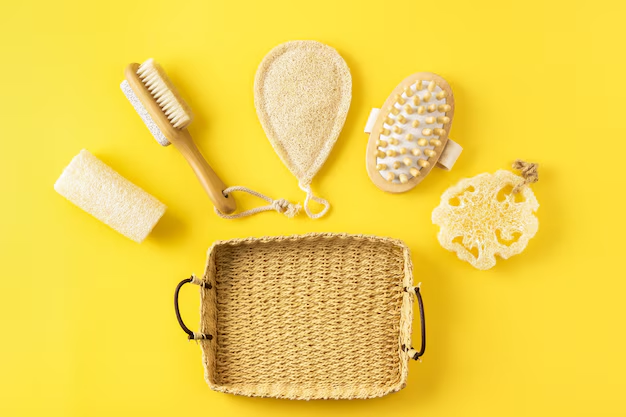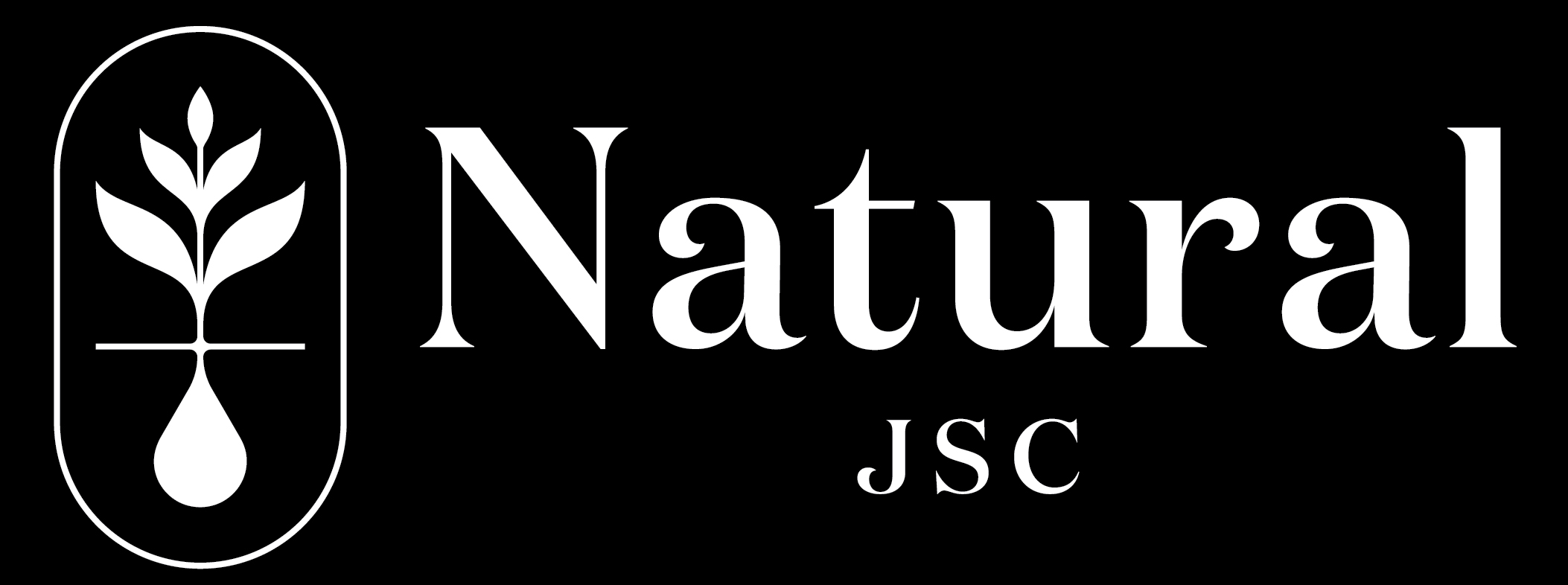For Vietnamese people, loofah is a humble ingredient that frequently appears in daily meals and is also an effective folk remedy. In addition to contributing to our country’s culinary culture, loofah, or more specifically loofah fiber, also plays a role as an eco-friendly material behind green products that have been and continue to build a sustainable lifestyle for us. Let’s learn about loofah fiber and loofah products in the following article.
What is loofah fiber?

Loofah is a climbing plant species primarily found in tropical and subtropical regions. When young, this plant typically has a sweet, refreshing taste, making it ideal for making cooling soups on hot summer days. This sweetness disappears when this plant is overripe (or has become old). At this point, thick fibers begin to appear inside the loofah, making it almost inedible. These fibers are the loofah fibers.
The journey to becoming an eco-friendly material
Although old gourds are inedible, they are not discarded. Instead, our ancestors recycled them. After peeling the skin and removing the seeds, the gourds were dried to make the fibers inside harder. Once they reach a certain level of hardness, the fibers are used as scrubbing tools for pots and pans. This was the first use of loofah fibers as an eco-friendly product.
Over time, as people began searching for potential biological materials for eco-friendly product manufacturing, loofah fibers gradually gained more attention. Research was conducted, and people realized the outstanding advantages of loofah. Because it is both hard and light due to its porous network structure, loofah is extremely suitable for processing into a variety of different products. Even better, loofah also scores perfectly on the requirement for environmental safety, which is extremely strict.
Loofah fibers stand out for their biodegradability in the natural environment. In other words, at the end of their life cycle, eco-friendly products made from loofah fibers will turn into water, CO2, and biomass or natural fertilizer if composted properly. Either way, these substances provide nutrients for plants and soil, continuing the loofah fiber’s mission of protecting the environment.
Last but not least, the production of eco-friendly products from loofah also creates job opportunities for many workers. The processes from harvesting and drying to processing into loofah products all require a large amount of manpower. Promoting the use of recycled products helps limit the negative impact of emissions from exploiting new resources while contributing to the development of the local community economy.
Eco-friendly products made from loofah
Household items
When it comes to household items, we cannot overlook the use of loofah for washing dishes. However, due to its softness when wet, loofah is also used to make glass scrubbers or multi-purpose brushes. The sturdy yet soft loofah fibers help clean stains without scratching dishes or glasses.
Interior decoration
In interior construction, loofah is often combined with other biological materials such as bamboo and coconut shells to create a compound that is both sturdy and flexible, durable, and environmentally friendly. The most common application of loofah in this market is as a soundproofing and heat-insulating material. Additionally, due to its rustic appearance, loofah is also popular for use in picture frames, bedside lamps, or doormats to enhance the natural feel of interior decor items.
Bathroom utensils

Thanks to its ability to create a good lather when in contact with water, loofah is often used to make back scrubbers, foot scrubbers, or bath sponges. Loofah easily scrubs away dead skin cells from our bodies without causing pain due to the characteristic softness of the fibers when soaked in water. Additionally, this eco-friendly material contains moisturizing vitamins to keep your skin soft and smooth with every use.
Conclusion
Loofah is not just a traditional kitchen scrubber; it is also a new generation of eco-friendly material. Loofah itself acts as a bridge. Through eco-friendly products, it brings us closer to a green lifestyle. Every eco-friendly product we use, whether made from loofah or other eco-friendly materials, contributes to protecting the environment and our ecosystem.
